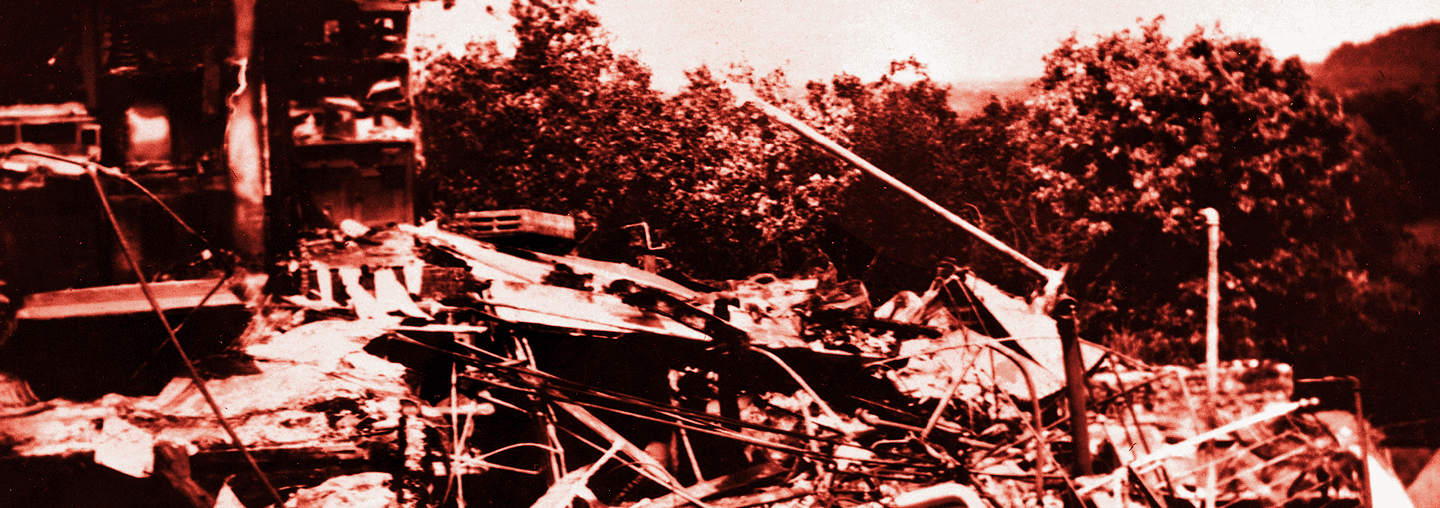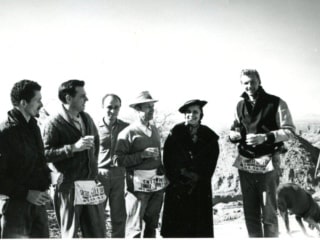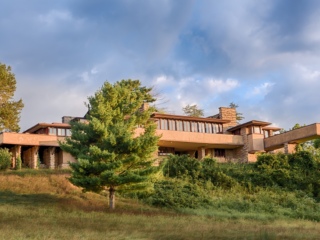
Rising from the Ashes
Stuart Graff | Oct 26, 2017
A personal reflection on the tragedies of Frank Lloyd Wright by Frank Lloyd Wright Foundation President and CEO Stuart Graff.
America is intrigued by origin stories—how something, or someone began. We find auspicious beginning in humble origins, and trace from there the arc of a life that leads to greatness.
Frank Lloyd Wright’s life traced no clean arc; his love of simple geometry never translated into that simple, direct story. Instead, his journey advanced in fits and starts, and is well documented in his own writings and those of the many scholars who studied and continue to study his work. Professionally and personally, one never senses in Wright’s life the choice of an easy path, but despite the difficulties inherent to navigating it, he charted a true path to find his own authentic and distinctly American voice.
As I write this I have been at the helm of the Frank Lloyd Wright Foundation for about fifteen months. I arrived as a bit of an amateur scholar, whose aesthetic was influenced by Wright’s work, and whose life was inspired by Wright’s choices, to find a path true to myself so that I might make some difference in the world. Not, in the words of Wright’s family credo “truth against the world,” but rather a truth for the world. In humility, I saw quickly how much there was to know despite a life of study.
Fortunately, the Foundation has many friends and family members—among them Wright’s apprentices, some of whom still live with us—to provide an education. Living at Taliesin West for several months, I got to hear from these kind people many wonderful stories about the Wrights, their lives, their work, and along with them the lives of those that they influenced and touched. Far from the arrogant caricature that we know (and even, a bit, love), I came to know a man who was supremely confident and yet found himself humbled by the many gifts that the world around him—Nature with a Capital N—offered: inspiration, the borrowed landscape, the source of structure, material, form.
But still there was this other man: the Wright of mistresses, murders, and leaky roofs. A man of sterling work but tarnished reputation, whose misdeeds informed works of fiction that still bring visitors to Taliesin and Taliesin West. Some members of the Foundation’s staff and even the larger community informed me how hard they had worked to move beyond these salacious details from Wright’s life, to put them in the past and bury them there. But doing so would smooth out the sharp edges and rough passages of Wright’s life; we could no more do that than remove the jutting stones of the walls at Taliesin to make them smooth. Instead, I looked more deeply at these elements of Wright’s life to understand them better.
The mistresses were an opportunity to understand Wright’s refusal to accept convention. While I wouldn’t suggest that we approve of his choices as moral, or accept them without recognizing the impact they had on his wife and children, Wright seems to have felt no more bound by the conventions of domestic life than he felt bound by the conventions of architecture. The searching mind that was creating Wright’s revolutionary architecture also searched for a way forward in his life. As he wrote in his Autobiography, “[w]hat I wanted I did not know. I loved my children. I loved my home. A true home is the finest ideal of man, and yet—well, to gain freedom I asked for a divorce.” He continued with the radical observations that “[m]arriage not mutual is no better, but is worse than any other form of slavery,” and that “[o]nly to the degree that marriage is mutual is it decent. Love is not property. To take it so is barbarous. To protect it as such is barbarism.” Wright could not more be constrained by the shape and form of conventional marriage than he could the shapes and forms of buildings.

Mamah Borthwick Cheney.
“When family-life in Oak Park that Spring of 1909 conspired against the freedom to which I had come to feel every soul was entitled, I had no choice, would I keep my self-respect, but go out on a voluntary exile into the uncharted and the unknown. . . . I meant to live if I could an unconventional life.” And so Wright traveled with Mamah Borthwick Cheney, his client’s wife, to Europe, and after several years, back to his home soil in Wisconsin, where they might find respite from scandal. There, building a house that “native in spirit and the making,” he created his “shining brow for the hill, the hill rising unbroken above it to crown the exuberance of life in all these rural riches.”
This respite was not long lasting. Within a few short years, a madman working for him set fire to Taliesin, killing Cheney, her children, and others working at the estate. Such a loss might well have led a romantic like Wright to take his own life, or to dive deeply into a well of despair never to emerge. But here, too, there is deeper meaning.
Wright’s practice, we know, began to sour upon his departure from Oak Park. Whether the interest in the Prairie School had begun to wane, or the scandal of his affair made it impossible for clients to hire him, we cannot fully know. But what we see at the moment of the murders and fire at Taliesin is this: the closing of a chapter, an ending, tragic but certainly final. Wright tells of his darkness in the wake of these murders: “[f]rom the moment of my return to that scene of devastating horror I had wanted to see no one. And I would see no one but the workmen. Work only was bearable.”
But of that work: “[a]s days passed into nights I was numb to all but the automatic steps toward rebuilding the home that was destroyed by hateful forces.” The home was not rebuilt, but reinvented. “Perhaps a new consciousness had to grow as a green shoot will grow from a charred and black stump? . . . I could see forward only. I could not see backward.”
Wright left his Prairie School years behind with the death of Cheney. The rebuilding of the house, the creation of Taliesin II (as he called it), created for him a sense of “renewal.” The new home was a “more reposeful and a finer one. Not a chastened Taliesin. . . . Something was coming clear, now.” And from the ashes of his beloved Taliesin, and his beloved Mamah, Wright found conviction. “The tread that faltered for a moment in weakness and confusion became elastic and more sure as Work came alive again.” From the tragedy that had occurred at Spring Green, a new opportunity sprang forth, and boldly charted a brilliant forty-five years of original work.
Which leaves us to discuss the leaky roofs. Wright’s reputation for bold and original design may be only surpassed by his reputation for bad roofing. But here, too, there is a deeper lesson. Above all else, Frank Lloyd Wright was an experimentalist who pushed materials and structures to their limits. This was the insightful genius who found elegant strength in the skeleton of a staghorn cholla cactus—and deployed that structure brilliantly in the design of the SC Johnson Administration Building. Who opened up space and spirit by building a church in reinforced concrete. And who convinced his clients, perhaps against their better judgments, to take bold risks so that they might live and work better, more beautifully, than a conventional building would allow. The rewards of such adventure might be worth a bit of rain.
Header photo courtesy of the Wisconsin Historical Society.
This article originally appeared in the Spring 2017 issue of the Frank Lloyd Wright Quarterly, “Plan.”



